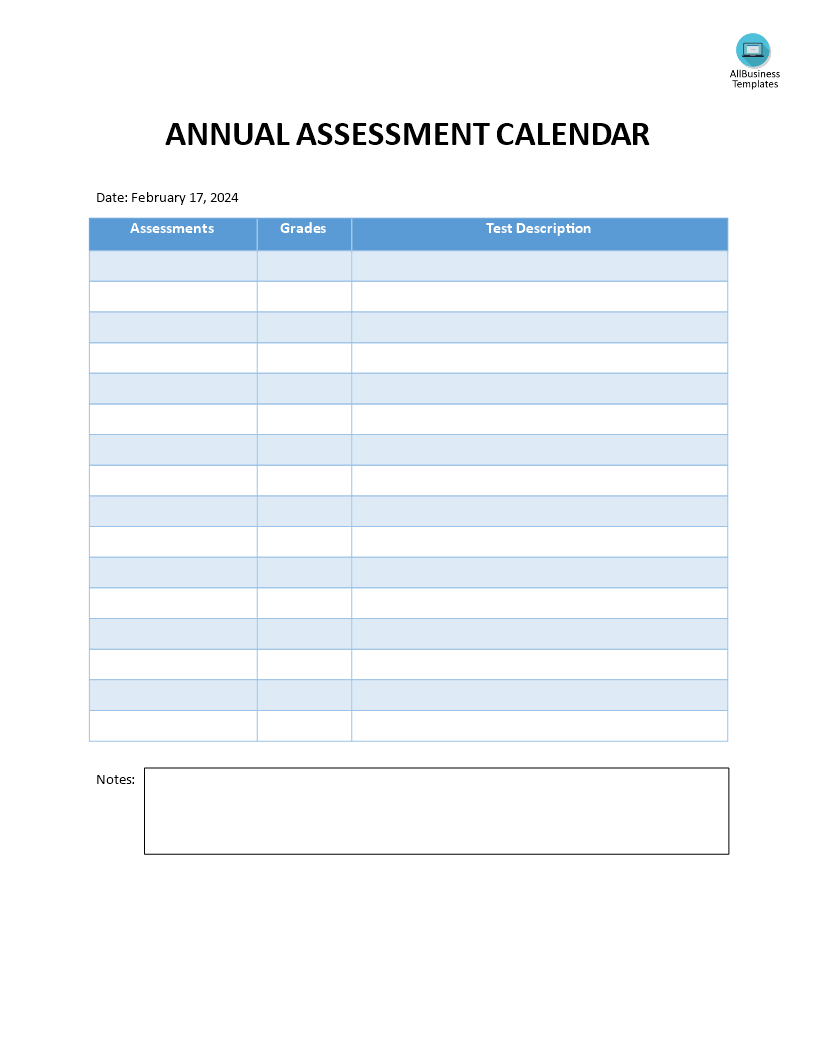Annual Assessment Calendar
Sponsored Link免费模板 保存,填空,打印,三步搞定!

Download Annual Assessment Calendar
微软的词 (.docx)免费文件转换
- 本文档已通过专业认证
- 100%可定制
- 这是一个数字下载 (115.58 kB)
- 语: English
Sponsored Link
What is the purpose of an annual assessment calendar? Do you need an annual assessment calendar template for your business? Downloading this calendar template will help you keep track of employee performance throughout the year. It can also help you identify areas of improvement and set goals for the coming year. Additionally, it can help you plan for future training and development.
An annual assessment calendar is a planning tool used by educational institutions, organizations, or businesses to schedule and outline the timing of various assessments, evaluations, and reviews throughout the year. This calendar helps in organizing and coordinating different assessments, examinations, or evaluations that need to be conducted periodically. It ensures that assessments are spaced out appropriately, preventing overlap and ensuring a systematic approach to evaluating various aspects.
Key components of an annual assessment calendar may include:
- Type of Assessments: Specify the nature of assessments, such as academic exams, employee performance reviews, compliance audits, or any other evaluations relevant to the organization.
- Dates and Deadlines: Clearly outline the dates when assessments are scheduled to take place and indicate any important deadlines for submission of assessment materials or completion of tasks.
- Frequency: Indicate how often assessments occur, whether they are annual, bi-annual, quarterly, or follow a different schedule.
- Responsible Parties: Identify the individuals or departments responsible for organizing and conducting each assessment.
- Preparation Time: Allocate time for preparation, including creating assessment materials, communicating with stakeholders, and ensuring all necessary resources are available.
- Reporting Periods: Specify when assessment results or findings will be compiled and communicated to relevant stakeholders.
- Review and Analysis: Include time for reviewing assessment results, analyzing data, and identifying areas for improvement.
- Feedback Sessions: If applicable, schedule sessions for providing feedback to individuals or groups being assessed.
- Adjustment Periods: Allow for flexibility in the calendar to accommodate unexpected events or adjustments that may be needed.
- Continuous Improvement: Consider including time for assessing the effectiveness of the assessment process itself and making improvements as necessary.
Having a well-structured annual assessment calendar ensures that assessments are conducted in a timely and organized manner, facilitating effective decision-making, improvement initiatives, and goal-setting based on the results of the assessments.
Click directly on 'Open with Google Docs' or download our sample annual assessment calendar template as a Word template now to enhance efficiency! Your success in delivering a well-structured and effective calendar awaits.
DISCLAIMER
Nothing on this site shall be considered legal advice and no attorney-client relationship is established.
发表评论。 如果您有任何问题或意见,请随时在下面发布
Sponsored Link

